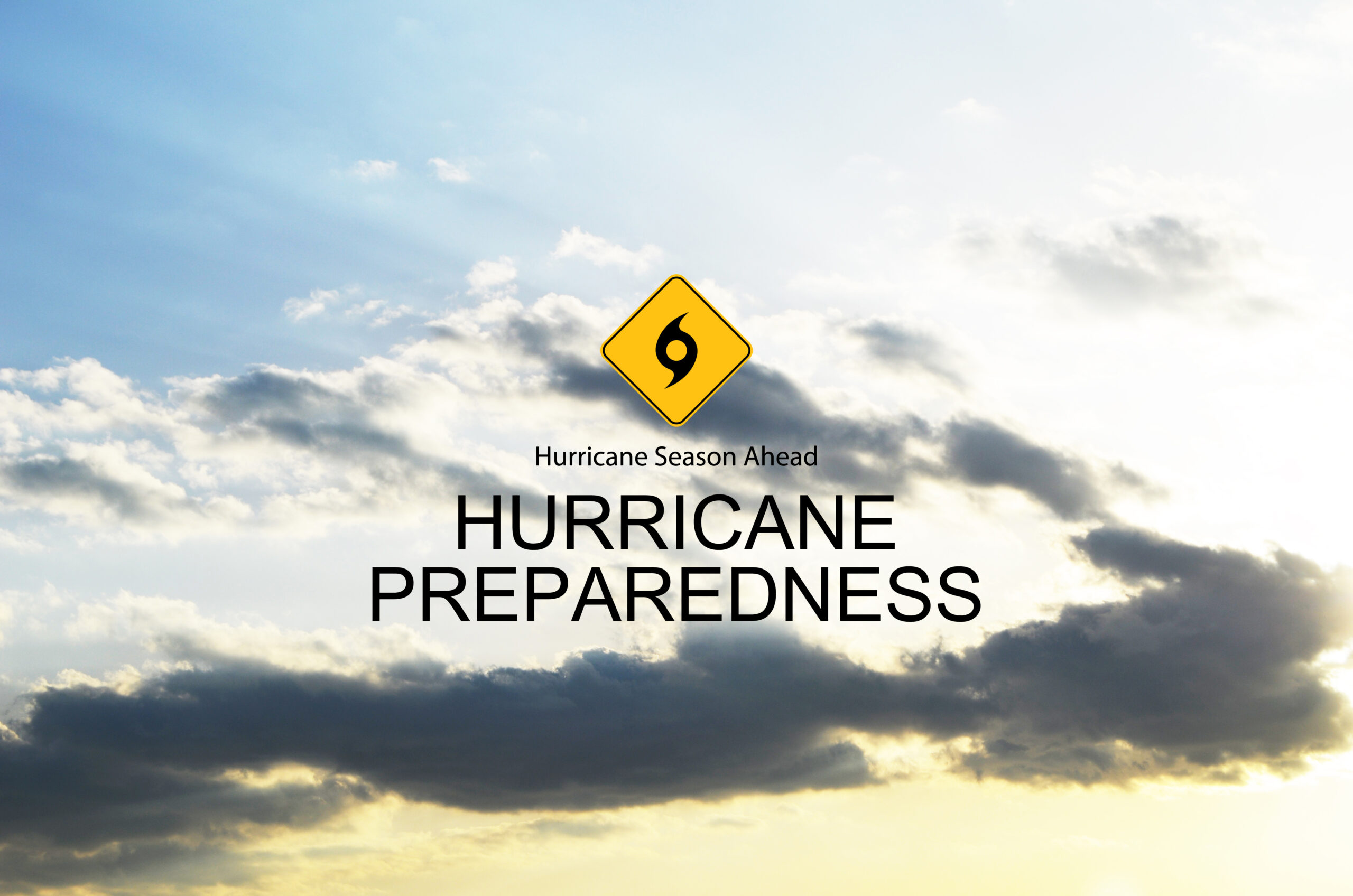Hurricanes can hold sustained wind speeds of 74 miles per hour up to over 155 miles per hour causing significant damage and disruptions to businesses. Regions along the Atlantic Coast, near the Gulf of Mexico, and parts of the Southwestern United States are at risk for hurricanes.
Hurricane Season Is Upon Us
Hurricanes typically occur during the Atlantic hurricane season, which runs from June to November, peaking between August and October. The Eastern Pacific hurricane season starts in mid-May and ends in November as well.
Hurricane Preparedness
Being prepared is crucial to ensuring the safety of your employees and minimizing the impact on your operations. Here’s a simple guide according to the U.S. Department of Labor’s Occupational Safety and Health Administration (OSHA) to help your small or medium business (SMB) get ready for hurricane season.
- Set A Thorough Evacuation Plan In Place
- Activation Conditions: Define the conditions that will trigger your evacuation plan. This could include hurricane watches or warnings issued by local authorities.
- Chain of Command: Establish a clear hierarchy of who makes decisions during emergencies. This ensures that everyone knows who to report to and who has the authority to order evacuations.
- Emergency Functions: Assign specific roles to employees for emergency functions, such as shutting down equipment, securing facilities, or guiding others to safety.
- Evacuation Procedures: Develop detailed evacuation procedures that include primary and alternative evacuation routes, designated exits, and assembly points.
- Personnel Accountability: Establish procedures for accounting for all personnel, customers, and visitors during and after evacuation. This ensures no one is left behind.
- Equipment Preparation: Prepare necessary equipment for personnel, such as emergency kits, first aid supplies, and communication devices.
- Emergency Action Plan (EAP)
- Your EAP must meet the requirements under 29 CFR 1910.38. In fact, OSHA helps you create a customized EAP based on your unique business needs. Click here to learn more: eTool : Evacuation Plans and Procedures – OSHA’s Expert Systems – Create Your Own Emergency Action Plan (EAP) | Occupational Safety and Health Administration
- Understand Hurricane Alerts and Warnings
- Watch: Indicates that hurricane conditions are possible within the specified area. Stay alert and monitor local news for updates.
- Warning: Issued when hurricane conditions are expected within 24 hours. Take immediate action to secure your business and evacuate if necessary.
Hurricane Intensity Scale
Understanding the Saffir-Simpson Hurricane Wind Scale helps you anticipate potential property damage and prepare accordingly:
- Category 1 & 2: Dangerous winds (74-110 mph) causing varying degrees of damage, from roof damage to power outages lasting days to weeks.
- Category 3 & Higher: Major hurricanes with winds 111 to 157+ mph with devastating to catastrophic damage potential, including severe structural damage and prolonged power outages.
Regulatory Compliance and Additional Resources
- OSHA Requirements: Businesses involved in emergency response operations must comply with OSHA’s Hazardous Waste Operations and Emergency Response (HAZWOPER) standard. Ensure your plans meet these requirements.
- Emergency Kits: Equip your business with emergency supply kits containing essentials like water, food, flashlights, and first aid supplies. Store these in easily accessible locations.
- Training and Exercises: Regularly train employees on emergency procedures and conduct evacuation drills. Update your plans based on lessons learned from these exercises.
Additional Tips
- Stay Informed: Familiarize yourself with your local community’s emergency plans, warning signals, and nearby shelters.
- Follow Authorities’ Instructions: Always follow evacuation orders issued by local authorities. Your safety and that of your employees is the top priority.
Preparing your business for a hurricane requires foresight and planning. By taking proactive steps to prepare your business for hurricane season, you can mitigate risks, protect your employees, and ensure business continuity.
For more detailed guidance, visit resources like Ready.gov or contact your local emergency management office. Remember, preparedness is key to staying safe and resilient in the face of hurricanes and other natural disasters. Stay safe and be prepared!


